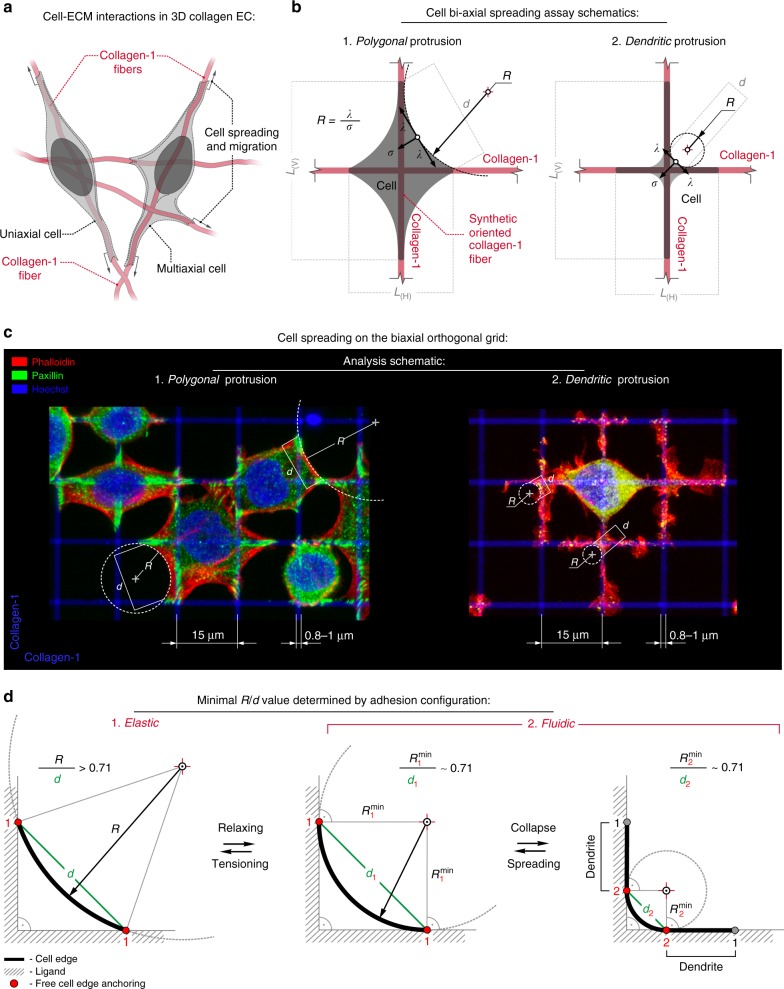Fig. 1.
Biomimetic platform to define directional and mechanical guidance cues. a Schematic of prominent cell adhesion interactions in 3D fibrous microenvironments. b Schematic of the range of cellular responses to biaxial cues from orthogonally oriented type I collagen lines. See also Supplementary Figure 1 that describes the uniaxial guidance cues employed in this study, which represent anisotropic oriented collagen fibers versus biaxial cues that model non-oriented fibrous matrices. We note that both of these are distinct from quasi-2D conditions that result from closely spaced nanolines. To quantify the mechanical response to soft and stiff substrates, we employ a 2D Laplace law model that describes the relationship between cell shape and cell tension. In the Laplace model, free cell edge curvature radii reflect the balance between the internal tension σ and linear cell edge tension λ following R = λ/σ, where larger R correlates with greater forces at adhesion sites. c Examples of distinct cell architectures (3D reconstructions), corresponding to the schematics outlined in b that we show here can emerge in response to biaxial guidance cues and specific mechanical relationships between the cell and matrix. For analysis of cell mechanics with a 2D Laplace law formulation, the orthogonal guidance cues determine the minimal R/d value (~0.71) for any spanning distance d. For more dominantly elastic behavior, R/d is >0.71 and a polygonal phenotype dominates. In contrast, instability emerges as R/d is at or near the minimum value where protrusions collapse onto the orthogonal lines resulting in more fluidic-like protrusion behavior with a dendritic phenotype

